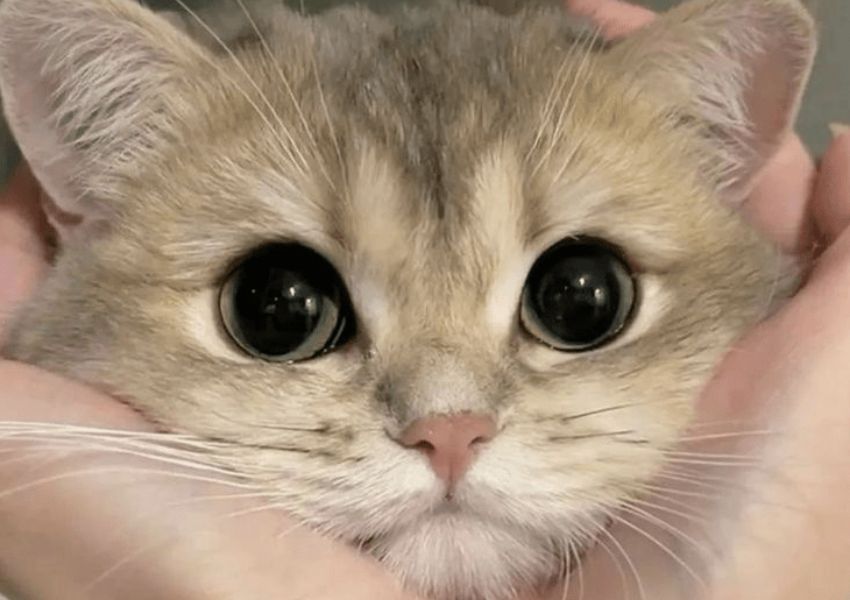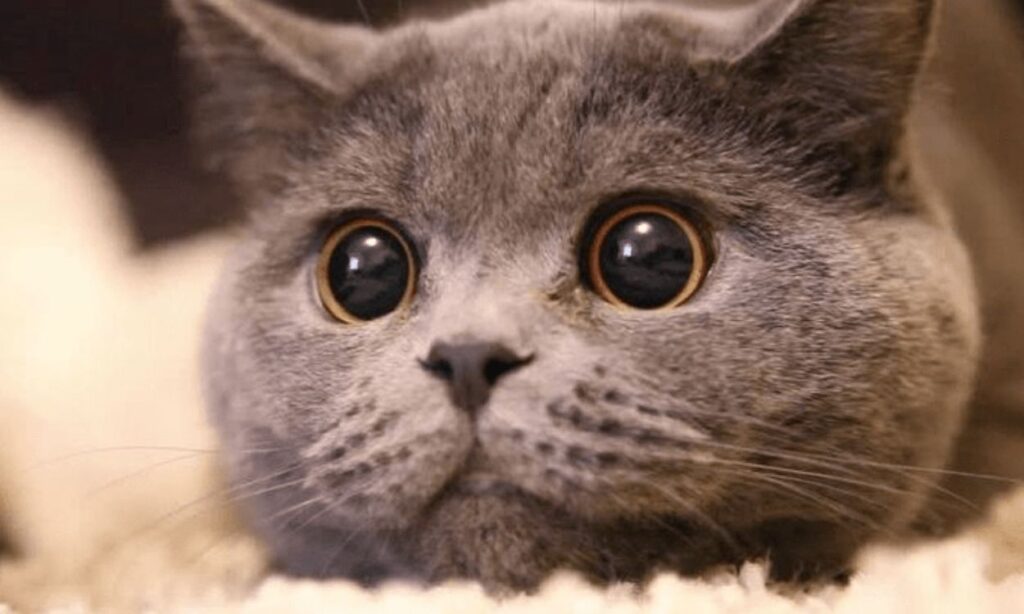In this Article
What is the Cat Eye Dilation and Why Does it Happen?
The dilation of a cat’s pupils is a natural and fascinating reaction to various causes. Cats’ eyes can expand or contract based on the light in their environment, but Cat Eyes Dilating can also signify stress, excitement, or an underlying health issue.
This change is often a sign of how the cat is feeling or a potential health problem.As a pet owner, it’s important to understand these clues and how they communicate your cat’s emotions or health status.
If your cat’s pupils remain dilated without any apparent reason it might be a sign of seizures or other health issues that require veterinary advice. Being aware of these changes ensures that your cat’s well-being is always prioritized.
Reasons of Cat Eyes Dilating

1. Low Light Conditions: When in low light, a cat’s pupils dilate, allowing them to see much better than human eyes can in the dark. This adaptation helps them absorb more light, making it easier to spot movement and navigate through dim environments, helping them thrive in conditions where other creatures struggle.
2. Excitement or Playfulness: When cats feel excited or are in the mood to play, their eyes naturally dilate. The pupils widen as a response to stimulation, which signals heightened arousal. Cats often show this during active play, making their pupils a clear indicator that they are fully engaged and energized.
3. Pain or Discomfort: If you notice your cat’s eyes dilated, it could be a sign of pain or discomfort. Cats in distress often show dilated pupils as their body’s reaction to stress or injury. In these moments, your cat may also start vocalizing or seek out hiding spots to cope with the pain. It’s essential to observe these changes, as they can indicate that your pet is not feeling well.
4. Anxiety and Fear: When a cat feels scared or anxious, its pupils dilate as part of the natural fight-or-flight response. This helps them take in more of their surroundings, allowing them to assess any potential danger. I’ve noticed this reaction in my own cat when she’s startled her eyes widening as she scans the room.
5. Illness or injury: in cats can lead to dilated eyes as the body reacts to stress or pain. Conditions like infections, head trauma, or internal injuries can affect the nervous system, causing abnormal pupil dilation. From my experience, cats with severe pain often show this sign, as their body tries to cope with the distress.
Some Medical Reasons of Cat Eyes Dilating

6 Neurological disorders: in cats can cause dilated eyes due to abnormal brain or nerve function. These conditions, such as seizures or brain trauma, affect the cat’s ability to regulate eye responses. I’ve seen this in cats with severe neurological issues, where their pupils remain dilated even without external stimuli.
7 Brain Tumors: When tumors affect the brain or eye structures, they can cause changes in the cat’s eyes, such as wide pupils that don’t respond to light properly.
This could be a result of the tumor triggering abnormal eye behavior. If you notice cloudy discharge or the third eyelid becoming more prominent, along with signs of chronic pain, these could indicate a tumor affecting the eye.
The type of tumor and its affecting areas can vary, so it’s important to be aware of any other signs of distress in your cat. Regular vet check-ups help identify these tumors early, potentially saving your cat’s vision and health.
8. Poor Vision: As cats get older, you might notice that their eyes and pupils begin to dilate more than usual. This can happen when their vision starts to deteriorate due to underlying conditions. When a cat’s sight is affected, they may squint or show signs of poor vision. It’s crucial to keep an eye on these changes, as it could be an early sign that something is wrong with their eyes or overall health.
9. Glaucoma: As cats age, you might observe that their pupils become wide, which could signal a problem like glaucoma. This condition, caused by increased intraocular pressure, can affect one or both eyes, resulting in discomfort or potential vision loss.
If you notice signs of dilated pupils or other changes in your cat’s vision, it requires immediate veterinary attention. Prompt care is essential to prevent further complications and ensure your cat’s well-being.
Normal Cat Pupils

Cats’ pupils fluctuate in size and shape, reacting to both light and emotion. When a cat is relaxed and content, their pupils tend to narrow into vertical slits. However, when they are excited or ready to pounce, their pupils become large and round, indicating a high emotional state.
This change in pupil size is a natural response to the environment. If there is any irregularity or unequal size in the pupils, it may signal an underlying condition such as trauma, infectious disease, or even cancer. It’s important to monitor any such changes and visit a vet if needed for a proper check-up.
When to Consult a Veterinarian for Care
There are situations where dilated eyes in cats should raise concern and prompt a visit to the vet for a thorough check-up.
- Continuous Pupil Dilation: If your cat’s pupils stay dilated for a long time, particularly in well-lit areas, it may be a sign of an underlying issue that requires attention.
- Unusual Eye Changes: If you observe any changes in your cat’s eyes, like cloudiness, discharge, redness, or swelling, it’s important to consult a vet for proper diagnosis and care.
- Age-Related Changes: As cats age, they become more susceptible to health conditions that may lead to dilated pupils, making regular veterinary check-ups essential for maintaining their well-being.
How Vets Diagnose Cat Health
If your cat has dilated eyes, the veterinarian will first conduct a thorough exam to assess their condition. The vet will perform baseline tests like bloodwork and urinalysis to uncover any underlying cause.
They’ll also check your cat’s blood pressure and may use Tonometry to test the pressure in the eye and check for glaucoma. A detailed ophthalmology exam using Ophthalmoscopy will help them evaluate the retina, optic nerve, and blood vessels.
Depending on the situation, further scanning tests like an Ultrasound or CT scan may be needed to evaluate other possible issues such as brain tumors. These tests will help the vet make a clear diagnosis and ensure your cat’s vision and health are in good shape.
Loss of Vision
When a cat’s eyes dilate, it may signal an issue with their vision, potentially leading to blindness or losing sight. If your cat begins to show hesitation while trying to locate water or food, or struggles to jump or climb, it could be a sign of vision loss.
Look out for squinting, red, or cloudy eyes. In some cases, a cat may show unsteadiness while walking or react with vocalization to sudden noises, indicating distress. The cat’s reliance on whiskers and ground sensations may increase, as they try to capture information from their surroundings when visibility is reduced.
These signs can be subtle, but noticing them early can help address potential issues before they become more serious.
Summary of Cat Eyes Dilating
Cats’ eyes can dilate as a normal response to stimuli like excitement or low light. This natural reaction allows them to adjust to their surroundings. However, persistent dilation or unusual changes in their eyes may indicate a health issue.
If this happens, it’s important to stay observant and pay attention to any other signs. Emotions can also play a role in dilation, but if the change seems out of the ordinary, providing proper care and consulting a veterinarian is crucial for your feline’s well-being. Timely attention can help address any health concerns and ensure that any doubts are resolved promptly.
FAQs
1. What does it mean when my cat’s eyes dilate?
When your cat’s eyes dilate, it usually means they’re excited, alert, or in low light conditions. It can also indicate strong emotions like fear or curiosity, depending on the situation.
2. Do cats’ eyes dilate when they love you?
Yes, cats may dilate their eyes when they’re feeling comfortable and affectionate towards you. It’s a sign of relaxation and trust, often seen during moments of bonding or playtime.
3. Do cats’ pupils dilate when sick?
Yes, dilated pupils can be a symptom of illness, particularly if your cat is feeling stressed, disoriented, or in pain. If accompanied by other symptoms, it’s important to consult a vet.
4. Why is my cat staring at me with big eyes?
If your cat is staring at you with big eyes, it could be a sign of affection or curiosity. Cats often use direct eye contact as a way to communicate trust and love, especially if they feel safe with you.
